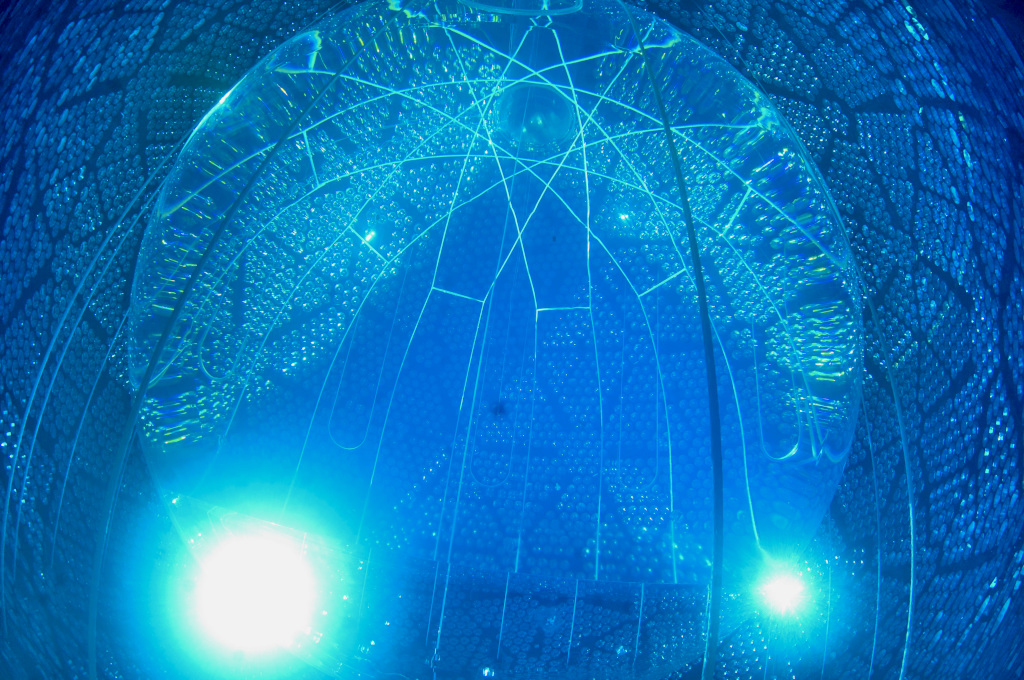The SNO+ experiment will eventually search for neutrinoless double beta decay ($0\nu\beta\beta$) by loading Tellurium metal into the organic liquid scintillator Linear alkylbenzene (LAB) and precisely measuring the energy of electrons produced by double beta decay of Te$^{130}$. The amount scintillation light produced by the double beta decay electrons is proportional to their energy, and the energy distribution of the electrons encodes the physical process that resulted in the double beta decay. Usually, two electrons and two neutrinos are emitted, and the neutrinos carry away a fraction of the energy, resulting in electrons with less energy than the nuclear transition (about 2.6 MeV). However, if neutrinos and anti-neutrinos are the same thing (that is, if neutrinos are Majorana particles) the neutrinos could be virtual particles of the interaction, and only electrons would be emitted. These electrons would have the full energy of the nuclear transition, about 2.6 MeV.
Therefore, searching for 2.6 MeV pairs of electrons from Te$^{130}$ is an experimental way to test for $0\nu\beta\beta$. To perform this search, SNO+ needs to reconstruct the neutrino events with very good energy resolution to conclusively see the mono-energetic $0\nu\beta\beta$ electrons, if they exist. The high light-yield liquid scintillator LAB (with a wavelength shifter to further boost the visible light output) provides a large enough optical signal that event the tiny 2.6 MeV energy produces hundreds to thousands of detectable photons.
SNO+, originally a water-Cherenkov detector, started replacing its internal water volume with scintillator in October 2018. Significant engineering hurdles related to having to purify the scintillator in a chemical plant 2 km underground were overcome throughout 2019, and at the start of 2020, SNO+ was nearly 1/3 full of liquid scintillator.

An image from a SNO+ internal camera from Jan 31, 2020, showing the liquid scintillator level inside the acrylic vessel when it was about 1/3 full. The liquid scintillator is lighter than water, and thus sits on top of the water in the space that looks “empty”. Click for a larger image.
Of course, right when scintillator fill was picking up speed, the Covid-19 pandemic hit, bringing underground operations to a halt for many months. As lockdown restrictions have lifted, SNO+ has made significant progress filling with scintillator. Now, in March 2021, SNO+ is just one fill cycle away from completing scintillator fill!

An image from a SNO+ internal camera from Feb 25, 2021, showing the liquid scintillator level inside the acrylic vessel. This is a different perspective (looking up instead of down), and here the fill level can be seen between the two lights, with most of the acrylic vessel full. Click for a larger image.
Soon, the scintillator fill will be completed. SNO+ will spend some time with pure scintillator to better understand the optics of the filled detector, and possibly performing a measurement of solar neutrinos. After that, the Tellurium will be added to the mix, and the search for $0\nu\beta\beta$ will begin.
>> Home